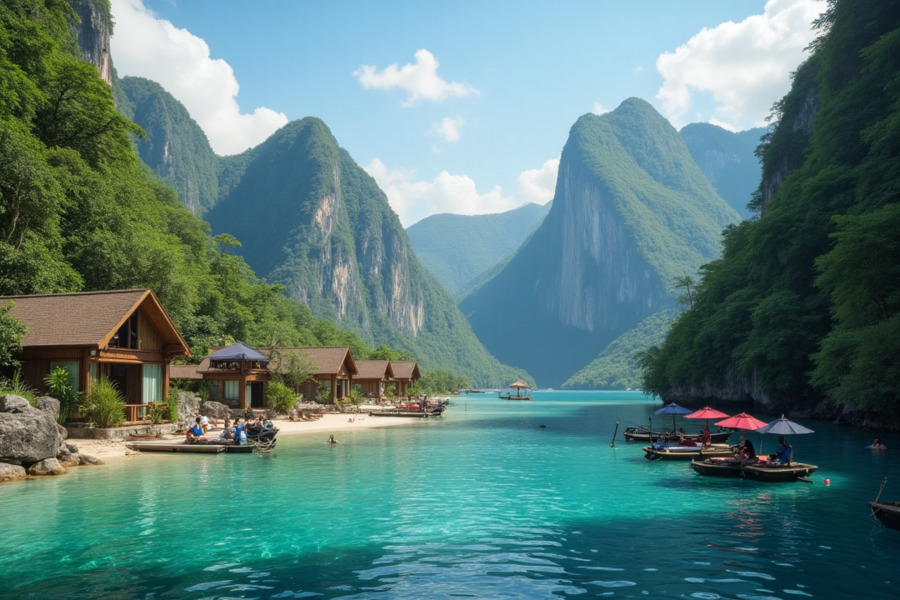≡-Iran’s Cultural Legacy Faces Devastating Threat as Land Subsidence Rapidly Erodes Iconic Historical Sites and Precious Heritage – Viral of Today
<> Viral of Today <>
Home » TOURISM NEWS » Iran’s Cultural Legacy Faces Devastating Threat as Land Subsidence Rapidly Erodes Iconic Historical Sites and Precious Heritage Monday, June 9, 2025Iran’s cultural heritage, a cornerstone of its historical identity, is facing an alarming and escalating crisis due to the devastating effects of land subsidence. This slow-moving phenomenon, often referred to as a “silent earthquake,” is causing irreparable damage to some of the country’s most treasured landmarks, including the ancient cities of Isfahan, Persepolis, and Naqsh-e Rostam. The rapid sinking of the ground’s surface, fueled by unsustainable agricultural practices, excessive groundwater extraction, and natural geological shifts, is threatening the structural integrity of these iconic sites. With significant risks to Iran’s rich cultural legacy, urgent action is required to preserve these invaluable treasures before they are lost forever.Land Subsidence Threatens Iran’s Cultural Heritage: A Silent Crisis for Historical SitesIran’s cultural heritage, an irreplaceable asset that includes some of the world’s most famous historical monuments, is currently under significant threat due to the phenomenon of land subsidence. This slow-moving disaster, which has been described as a “silent earthquake,” is causing irreversible damage to many of the nation’s most iconic cultural sites. The phenomenon has recently gained attention after a report presented by the Iranian Minister of Culture and Islamic Guidance on June 8 highlighted the dangers posed by land subsidence to historical sites, museums, and ancient villages.Land subsidence is a gradual sinking of the ground’s surface caused by various factors, including excessive groundwater extraction, unsustainable agricultural practices, and natural geological processes. In Iran, land subsidence is accelerating at an alarming rate, with Isfahan and other areas in the Marvdasht region becoming key hotspots for this crisis.Rising Risks in IsfahanIsfahan, one of Iran’s largest and most historically significant cities, has been identified as the area most at risk from land subsidence. According to available data, Isfahan faces the highest levels of land subsidence in the country, with the phenomenon moving rapidly through the city. As residential buildings, critical infrastructure, and essential facilities succumb to the effects of land subsidence, the impact on historical landmarks is becoming increasingly worrying.The ancient city of Isfahan, which was once the jewel of the Persian Empire, is now facing damage to its historical architecture. As the ground shifts and sinks beneath the city, the city’s rich cultural assets, including palaces, mosques, and bridges, are vulnerable to severe structural damage. Experts are particularly concerned that if this crisis is not addressed soon, the city could lose a major part of its cultural heritage.Persepolis and Naqsh-e Rostam: Iconic Sites at RiskThe land subsidence issue is also endangering two of Iran’s most globally recognized archaeological treasures: Persepolis and Naqsh-e Rostam. Persepolis, the ceremonial capital of the Achaemenid Empire and a UNESCO World Heritage Site, has stood as a symbol of ancient Persian grandeur for over 2,500 years. The escalating subsidence in the nearby area is now presenting a serious risk to this ancient landmark.Naqsh-e Rostam, a necropolis that houses the tombs of Achaemenid kings, including the famous tomb of King Darius I, is also being impacted by land subsidence. These ancient sites, which attract thousands of tourists and historians every year, are part of Iran’s most significant cultural and historical legacies.The phenomenon of subsidence in the Marvdasht region, where both Persepolis and Naqsh-e Rostam are located, has already been linked to unsustainable agricultural practices. These activities, especially the excessive withdrawal of groundwater for irrigation in the fertile plains of Fars province, have played a major role in driving the rapid land subsidence in the region. Experts estimate that the rate of subsidence in the region is between 20 to 30 centimeters annually, a worrying pace that threatens to undermine the structural integrity of these archaeological treasures.The Call for Immediate ActionAt a recent expert panel on climate change and cultural heritage organized by the Research Institute of Cultural Heritage and Tourism (RICHT) in May, Mehdi Zare, a distinguished professor from the International Institute of Earthquake Engineering and Seismology, expressed critical concerns regarding the swift land subsidence happening in the Marvdasht region. He emphasized that without immediate and coordinated action, Iran’s most treasured cultural landmarks could face irreparable damage.Zare’s concerns are echoed by many in the field of cultural heritage preservation, who are calling for greater collaboration between various government agencies, environmental organizations, and local stakeholders to mitigate the risks of land subsidence. They advocate for measures such as sustainable agricultural practices, stricter regulations on groundwater extraction, and the implementation of advanced technologies to monitor and address land subsidence before it reaches critical levels.A Silent CrisisLand subsidence may not be as visually dramatic as other natural disasters, but its long-term impact on Iran’s cultural heritage could be just as devastating. The gradual sinking of the ground beneath historical sites has been described as a silent crisis, one that threatens to erode Iran’s rich cultural and historical legacy piece by piece.As the situation worsens, the urgency for action becomes more apparent. Preserving these ancient sites for future generations is not just a matter of national pride; it is a responsibility to protect the collective heritage of humanity. The clock is ticking, and the steps taken in the coming months and years will determine the future of some of the world’s most important cultural treasures.Iran’s cultural heritage is under severe threat as land subsidence rapidly damages its iconic historical sites, including Isfahan, Persepolis, and Naqsh-e Rostam. Urgent action is needed to preserve these invaluable landmarks for future generations.Iran is at a critical juncture in its battle to preserve its cultural heritage. Land subsidence is an ongoing threat to cities like Isfahan and to ancient sites such as Persepolis and Naqsh-e Rostam. The speed at which this phenomenon is advancing demands immediate action, including reforms to agricultural practices, better management of water resources, and an integrated approach to preserving historical sites. If Iran does not act now, it risks losing invaluable pieces of its cultural identity.
This information will surprise you!
See also
- Read until the end to discover everything.
- Important information you need to know.
- Interesting facts and helpful tips.
Conclusion
Did you enjoy the news? Keep following us daily!













